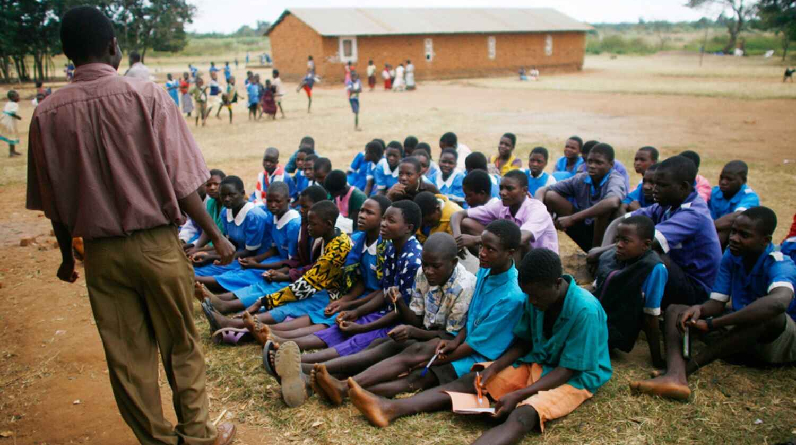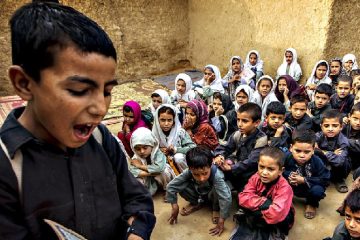From 2022-2023, we must speed up our efforts to shield schools from potential dangers

Hopeful thinking will begin in the year 2022.
On the bright side, 2022 was a watershed year full of promise for the world’s youth, their schools, and their futures.
After a rough patch during the height of the COVID-19 pandemic, most educational systems appeared to be on the mend and had taken a number of lessons from the experience. The children are making tremendous efforts to make up for lost academic ground.
The United Nations General Assembly in September 2022 hosted the Transforming Education Summit (TES), which provided a rare opportunity to recommit to action in favour of education during times of crisis and to launch a new Greening Education Partnership. Much more will be done as these pledges take form in the years leading up to the first progress report in 2025, all of which will contribute to the successful completion of SDG 4: Education within the 2030 Agenda.
While the calls to accelerate the introduction of climate change education in all countries, at all levels, that were initiated at COP 26 were heard at COP 27, those calls were met with timid but tangible efforts. The COP 27 was summed up by the Global Partnership for Education (GPE) in a blog post, with one of the five key possible takeaways being the connection between education and climate finance.
A major event will be the September 2022 release of the Comprehensive School Safety Framework 2022-2030. Get a taste of the momentum behind the Global Alliance for Disaster Risk Reduction and Resilience in the Education Sector (GADRRRES) in this 5-minute summary video featuring champion countries, donors, and young people working together to promote child rights and resilience in the education sector in the face of all hazards.
On a more sombre note, 2022 was a year marked by numerous disasters that had lasting effects on children and young adults.
educational programmes all over the globe. Recognizing these ongoing impacts, which are being felt most strongly in countries that are particularly vulnerable to the effects of climate change, Parties at COP 27 agreed, 40 hours after the conference’s official closure, to establish a loss and damage fund to protect these nations. This has been a request of Small Island Developing States and other low-income countries for 30 years!
Climate change impacts, such as floods in Pakistan, have had a devastating effect on children and educational systems worldwide.
natural disasters, such as severe weather in Europe or earthquakes in the Philippines or Indonesia. Educators and students continue to be at risk of harm in war zones, often for reasons that have nothing to do with them. Picture places like Afghanistan, Colombia, or Mali. Consult the Global Coalition to Protect Education from Attacks’ annual report for more information.
Before 2023, we must take action.
Now we’re in 2023, a year with which GADRRRES has high hopes. By working with member states and beneficiaries, starting with children and teachers, the CSSF 2022-2030 will be rolled out regionally and at the country level across Asia and the Pacific, Latin America and the Caribbean, and Eastern and Southern Africa.
As the Chair of GADRRRES beginning in October 2022, UNESCO will continue pushing for the education sector to be included in the discussions that arise from the mid-term review of the Sendai Framework for Disaster Risk Reduction. During the first three months of 2023, the preliminary synthesis report will be posted on the MTR SF Submissions and Reports page.
Equally as exciting as attending the Asia-Pacific Ministerial Conference on Disaster Reduction in September 2022 is our participation in the VIII Regional Platform for Disaster Risk Reduction in the Americas and the Caribbean (RP23), which will take place from February 28 to March 2, 2023 in Punta del Este, Uruguay.
Members of GADRRRES will maintain their attention on project implementation to improve the lives of the world’s most at-risk children.
See Also: One Canadian province tries out the policy of decriminalising hard drugs
As an example, UNICEF will put into action the Today and Tomorrow initiative, a climate financing mechanism with a focus on children that was introduced at COP 27 and will initially focus on eight countries: Bangladesh, Comoros, Haiti, Fiji, Madagascar, Mozambique, Solomon Islands, and Vanuatu.
In their roles as accredited organisations, Save the Children and UNESCO will continue to draught and submit strong proposals for education-related projects to the Green Climate Fund and the Adaptation Fund, such as the ones that were approved in 2022 and are now being carried out in Vanuatu and Haiti.
A call for ‘education’ at COP28
Partners, we need your help to make COP 28 in Dubai a watershed moment for education in the COP process. Please join us in coordinating your efforts across the education community. Re-framing education as critical in the race against time to address the climate crisis can be accomplished through the lens of loss and damage, adaptation, climate finance, the Action for Climate Empowerment, and gender agendas. However, it is also a “forgotten sector” when it comes to adapting to climate change. It may take a village to raise a child, but schools can help bring climate talks into the modern age.
Leave a reply
You must be logged in to post a comment.







